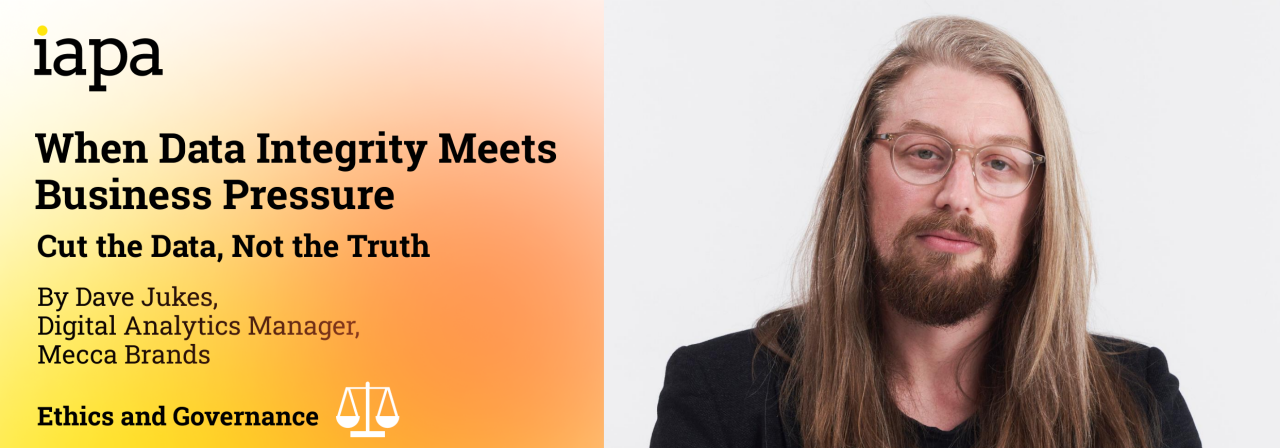
When Data Integrity Meets Business Pressure: Cut the Data, not the Truth
By Dave Jukes, Digital Analytics Manager, MECCA Brands
In the world of data analytics, you often find yourself balancing the needs of the stakeholder with the reality of what the data reveals. We’re tasked with telling stories from numbers, bringing insights to life, and informing critical decisions. But what happens when the story isn’t what the stakeholder wants? What happens when the pressure to "tell a better story", outweighs the responsibility to tell the truth?
How many times have you heard a stakeholder ask, “Can we cut the data a different way?” The tone is usually casual. The intent might not be harmful. But the implications can run deep.
Making the Data Look Good
We all want to tell the best story. We want to get our stakeholders excited, make them look good, and give them confidence in making the right decisions. This is one of the most powerful parts of our work. When done responsibly, it uncovers opportunity, aligns teams, and moves strategy forward. But, like any powerful tool, there’s risk in misusing it. The line between focusing on an insight and obscuring the truth can be crossed with just a few filters and exclusions.
“Can we just focus on last-click attribution?”
“Let’s drop the outliers to show stronger growth.”
“What if we remove mobile users? Will the conversion rate look better?”
Sound familiar?
These requests may not seem unethical at first glance. But over time, selective framing becomes a habit. When that happens, it’s not just accuracy that’s at risk it’s trust.
When the Data Doesn’t Favour Us
Here’s a wee example. Imagine analysing campaign results for a major client. Your agency has led a multi-channel activation, and expectations are high. But when the numbers come in, the results are mixed. Some channels show strong engagement, but key outcomes i.e. conversion uplift falls way short.
Account managers suggest spotlighting only the best-performing segments to save face and make the agency look good. And yes, if we exclude email or narrow the timeframe, the story looks better. But is it the truth? No.
So, what do you do? Do you fold and present the “good” version? Or do you present the full picture - what worked, what didn’t, and why?
Take a breath. You know the numbers. You know the story. And ultimately, you know what’s right.
You highlight issues in targeting and creative alignment and suggest clear actions for the next phase.
The result? The client appreciates the honesty. The analysis gives them new insights and focus. They don’t pull the plug, they double down. And the next campaign significantly outperforms.
Remember while cherry-picking might win the meeting, honesty wins the relationship and leads to real results.
What to Do When You’re Asked to “Cut It Differently”
We all get these requests. The key is how we respond. Here’s a practical approach to navigate ethically while maintaining strong relationships.
1. Ask Why
It’s okay to ask, “What decision are you trying to make?” Often, stakeholders aren’t trying to manipulate the story they’re just trying to understand a specific angle. Clarifying intent helps you decide whether the new cut is legitimate or selectively motivated.
2. Show Both Views
If the alternative cut is valid, explore it but just not in isolation. Present it alongside the broader view. This helps stakeholders understand nuance without being misled.
3. Frame the Risk
Gently explain the consequences of showing only part of the picture. For example:
“If we highlight just this group, it could raise questions later when the broader results don’t align.”
4. Stand Your Ground (Professionally)
Sometimes this is difficult but remember you’re not there to sugarcoat. You’re there to inform. Saying, “We risk drawing the wrong conclusion if we only focus on that cohort,” isn’t pushback. It’s taking responsibility.
5. Find the Real Story
When the data doesn’t support the narrative, someone wants it often supports a better one. Maybe a campaign didn’t lift overall, but it over-indexed in a niche, high-converting audience. Helping stakeholders pivot and focus on what is working builds trust and credibility.
The Values Beneath the Surface
Even if we don’t say it aloud, every decision we make as analysts reflects deeper values:
Trustworthiness - Are our insights something others can rely on to make high-stakes decisions?
Honesty - Are we showing what the data says, or just what people want to hear?
Professionalism - Are we elevating the role of analytics through our actions and advice?
These aren’t just ideals. They’re what separate true analytics leadership from number crunching.
Consequences of Ethical Drift
What’s the risk if we let these requests slide?
Loss of Credibility
Once a stakeholder or client realises the data was selectively presented, trust in both the numbers and the analyst takes a hit. Rebuilding that can take months, maybe longer.
Flawed Decisions
When decisions are made based on incomplete or curated insights, the business suffers. Products get launched on false signals. Marketing budgets get wasted. Teams chase the wrong priorities. The analyst’s role is to inform the right decisions, even when they are tough.
Cultural Damage
When junior analysts see data being “massaged” without consequence, they assume it’s normal. That culture spreads faster than most leaders realise.
Reputational Risk
We see it all the time in daily life. Getting fact-checked is the norm. If misleading reporting becomes public, intentionally or not, it can damage brand trust and open the business and yourself to scrutiny.
Missed Opportunity
Ironically, by only looking at what worked, we often miss the insights into why something didn’t. That’s where real improvement lies.
What’s that saying? If it ain’t broke don’t fix it?
How do you know? Have you look under the hood? Maybe it’s stuck together with wrapping paper and just holding on for dear life. And when it does finally break the impact could be big!
In discomfort often lives the greatest value. Get yourself and your stakeholders comfortable with being uncomfortable.
Final Thoughts: Courage in the Cut
If you’ve ever felt that inner tension between what the data says and what the stakeholder wants it to say, you’re not alone. Every analyst hits this crossroad.
Ethical practice doesn’t mean refusing to deliver. It means reframing responsibly. Showing the full picture. Acknowledging the outliers. Being transparent about what’s not working, as well as what is.
Courage in analytics isn’t about being the smartest person in the room. It’s about being the clearest. The most honest. The most trusted.
Because when someone asks for a different cut of the data, what they’re really asking is this: Can I trust you to tell me the truth?
Say yes. And then prove it.
* All examples in this article are illustrative and not reflective of any specific company or client
About the Author
Dave Jukes is the Digital Analytics Manager at MECCA, where he leads the strategy and implementation of data-driven insights across digital platforms. With over a decade of experience in analytics and digital transformation, Dave is passionate about using data to drive meaningful business decisions, elevate customer experiences, and tell the best data stories. Beyond the data, he’s a strong advocate for building capability in others, regularly sharing knowledge, mentoring up-and-coming analysts, and fostering a culture of curiosity, integrity, and continuous learning.
